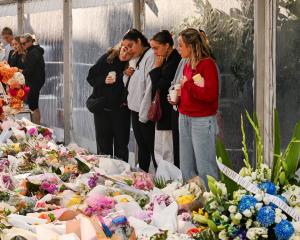
The death toll from a head-on train collision in southern Italy is now 23 after rescuers worked through the night to extract bodies from the tangled wreckage.
Local officials suggested human error might have been to blame for Tuesday's crash, one of the worst rail disasters in recent Italian history, with two passenger trains allowed to travel down the same stretch of track and no signalling in place to stop them.
The government promised €1.8 billion ($NZ2.7 billion) of funds to upgrade antiquated regional rail networks, but opposition politicians questioned why a planned upgrade at the crash site had been constantly delayed.
Government officials had said at one point that 27 people died in the collision, which occurred in a remote area between Andria and Corato in the southern region of Puglia, but local authorities later lowered the death toll.
"As things stand, we have 23 bodies," said local prosecutor Francesco Giannella, adding that all but one of them had now been identified. They included a high school student returning home from an exam, a police officer and both train drivers.
Some 50 people were injured, several seriously, in the crash that pulverised three carriages.
Prosecutors have opened an investigation into the disaster, with attention initially focused on the 50-year-old operating system designed to prevent trains travelling in different directions from simultaneously running on the same line.
As there was no hi-tech signalling system in place, station managers had to call each other to say when trains were en route, meaning that all other traffic had to be kept in the station until the track cleared.
DILAPIDATED SERVICES
While Italy boasts efficient high-speed train links between its main cities of Naples, Rome, Milan and Turin, much of the country is still dependent on slow, outdated and dilapidated services, especially in the under-developed south.
Transport Minister Graziano Delrio told parliament the government would invest urgently in a multi-million euro upgrade. "It is time to pick up the pace and make up for the delays this country has accumulated in local public transport, to which everyone has a right," he said.
There has been a long-standing project to modernise the line in Puglia and build a second track to reduce the risk of collisions. The European Union set aside €180 million for the plan in 2009, but it never got off the ground, bogged down by Italy's familiar scourge of bureaucracy.
Massimo Nitti, the director general of private company Ferrotramviaria that runs the rail service, dismissed suggestions that his firm was to blame for the foot-dragging, telling Norba TV that red tape had tied up the project.
"We Italians know what our problem is. Obtaining permits here takes 60-80% longer than anywhere else in Europe, not to mention tenders that are contracted out and that get stuck for a few years waiting for (court) rulings," he said.












